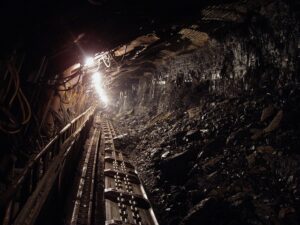In today’s industrial automation landscape, factories often operate with a mix of legacy and modern equipment, each utilizing different PLC communication protocols. This diversity poses a significant challenge: ensuring seamless communication between devices using protocols like Modbus RTU, Profibus, EtherNet/IP, and others.
PLC protocol converters serve as vital tools in this context, translating data between incompatible protocols to ensure smooth interoperability. By doing so, they prevent costly system overhauls and extend the lifespan of existing machinery.
Why Are PLC Protocol Converters Needed?
Legacy System Upgrades
Older PLCs, such as Siemens S5 or Allen-Bradley PLC-5, often use protocols like Modbus RTU or Profibus. Integrating these with newer systems that rely on EtherNet/IP or Profinet can be challenging. Protocol converters enable communication between old and new devices without necessitating complete production line replacements.
Multi-Vendor Environments
In facilities where Siemens PLCs (Profinet) need to interact with Rockwell (EtherNet/IP) or Mitsubishi (CC-Link IE) controllers, protocol converters act as “translators,” facilitating seamless communication between diverse systems.
SCADA & MES Integration
Modern SCADA (Supervisory Control and Data Acquisition) and MES (Manufacturing Execution Systems) often require Ethernet-based protocols like OPC UA or MQTT. Converters bridge the gap between field-level devices (e.g., RS-485, DeviceNet) and IT systems, ensuring cohesive data flow across the enterprise.
Types of PLC Protocol Converters
When talking about protocol converters, there are hardware and software solutions available on the market.
However, as a protocol converter manufacturer specializing in rugged industrial networking, we focus primarily on hardware protocol converter networking devices. Hardware-based solutions provide the real-time performance and industrial durability that critical applications demand.
Hardware Protocol Converters: The Reliable Backbone of Industrial Communication
Hardware protocol converters are standalone devices designed to physically translate communication protocols between industrial equipment.
They are the heart of industrial networks that must deal with mixed protocols, ensuring real-time communication without overloading PLCs or requiring complex reprogramming.
Key Features of Hardware Communication Protocol Converters:
- Real-Time Data Processing:
Industrial environments demand fast and deterministic communication. Hardware industrial protocol converters offer minimal latency compared to software alternatives. - Robust Physical Interfaces:
These converters often support RS232, RS485, Ethernet, CAN bus, and fiber-optic connections — making them highly versatile. For example, a serial protocol converter can connect RS232 legacy devices to modern Ethernet networks. - Durable Industrial Design:
Housed in rugged enclosures, these devices are designed to operate in harsh environments (extreme temperatures, vibration, EMI/RFI interference). - Vendor Certifications:
High-quality protocol converter devices are often certified by major PLC manufacturers such as Siemens, Rockwell, and Schneider, ensuring seamless compatibility.
Common Applications and Protocol Pairing Examples
- Modbus Protocol Converter:
Connect Modbus RTU serial devices to Modbus TCP/IP Ethernet networks without altering field devices. - BACnet to Modbus Protocol Converter:
Integrate building automation systems (BACnet) with industrial Modbus networks for centralized control. - CAN Bus Protocol Converter:
Bridge CANopen systems with Ethernet-based SCADA solutions in industries like automotive or manufacturing. - RS232 Protocol Converter:
Convert RS232 serial signals into Ethernet or RS485 communication to modernize legacy systems. - Protocol Converter Gateway Solutions:
Use protocol converter gateways for complex network integration projects that involve fieldbus-to-Ethernet or Ethernet-to-Ethernet protocol translations.
How to Choose the Right Protocol Converter Device
When selecting a protocol converter networking device, consider the following:
- Identify Your Protocol Pair:
Are you converting from Modbus RTU to EtherNet/IP? Profibus to Profinet? Knowing the source and destination is critical. - Check Performance Requirements:
For real-time control and low latency, a hardware industrial protocol converter is essential. - Evaluate Environmental Conditions:
If the converter will operate outdoors or in heavy EMI zones, choose IP-rated, ruggedized models. - Confirm Port Interfaces:
Look for support for RS232, RS485, CAN bus, Ethernet ports, or fiber optics as needed for your application. - Vendor Support and Certifications:
Ensure the device is certified and comes with long-term support from reputable protocol converter manufacturers.
Conclusion
In any industrial environment where different PLC brands, generations, and networks must coexist, hardware communication protocol converters are indispensable.
By investing in the right protocol converter networking device, you can:
✅ Extend the lifespan of legacy equipment
✅ Achieve real-time industrial communication
✅ Avoid costly system replacements
✅ Facilitate future SCADA/IIoT integrations
Whether you need a serial protocol converter, a CAN Bus protocol converter, or a versatile multi protocol converter, always partner with a trusted protocol converter manufacturer like Come-Star to ensure long-term reliability.


